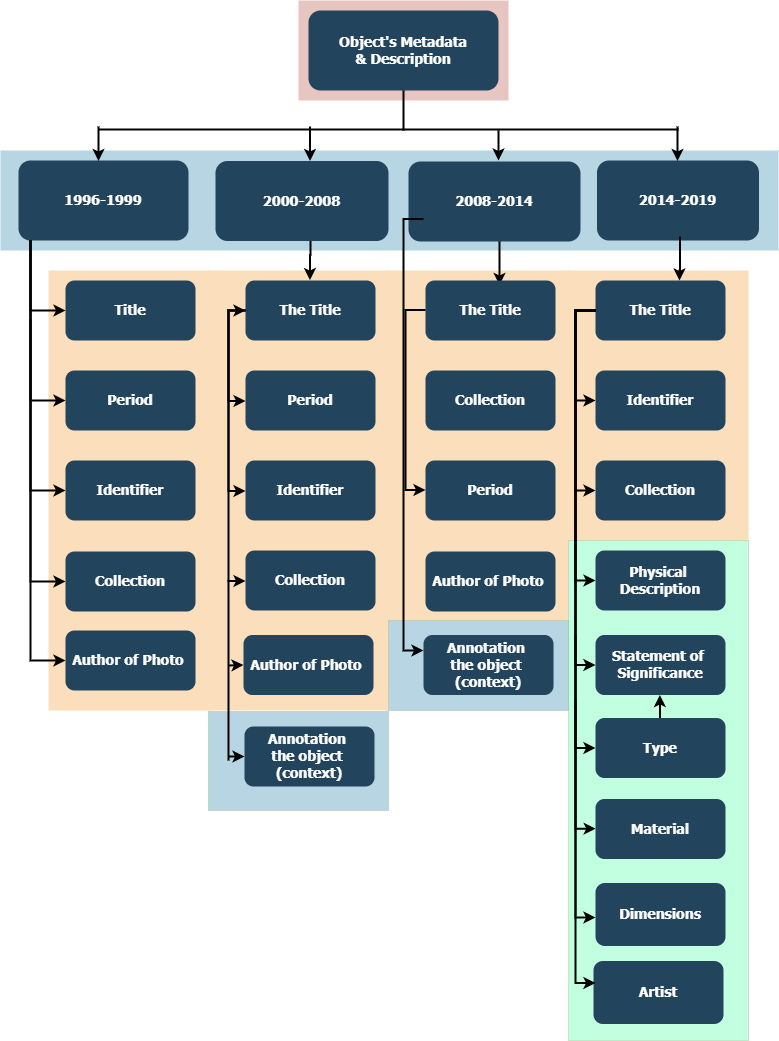The National Museum of Australia (Canberra, Australia)
The National Museum of Australia (Canberra, Australia) is one of the largest museums in Australia, and also one of the youngest, founded in 1980 and opened for public in 2001. Museum collections are dedicated to the social history of Australia, the main problems, people and events that have influenced the formation of the modern Australian nation. The consideration of this museum in the project on the digital history of virtual museums is especially significant since this museum was opened relatively recently and still continues to actively collect and shape collections. In addition, Australia has its own national web archiving program and, since 1996, web resources have been archived. In 2019, data from various web-based archiving projects were integrated into a single TROVE system maintained by the National Library of Australia.
Museum Values Online
Initially, the museum’s website reflected only general information about the museum and its collections, designed for a potential visitor to get a general idea of the museum before visiting the real museum . The specifics of a virtual museum can be seen already when considering the main pages of the museum for several years and the visual images from which they are built. The strategic values in the museum’s activities and the development of its virtual environment include the understanding and acceptance of the importance of the processes of resettlement, emigration and preservation of the history of indigenous peoples, the careful attitude to the history of Australia and its nature, as well as the wide social activity of the museum.
A thorough look at the visual rows of the main pages shows that it was important for the museum not only to represent collections and objects online but also to expose various forms of museum activity and people interaction.







Digital Exhibitions. Digital Museum Storytelling
The museum’s first digital initiatives relate to a version of the website created in the early 2000s. The first digital resources of the virtual museum were digital exhibitions dedicated to various social and political issues. It should be noted that the peculiarity of the museum’s digital exhibitions was that there was some acute problem in the center of the exhibition or resource, which was explained and exposed only partially using the objects of the exhibition and based primarily on the various stories. The museum storytelling always had a big role in the virtual museum.
Museum storytelling took various forms, including non-linear narrative. The digital exhibition of the early 2000s, devoted to calligraphy, realized the possibilities of non-linear storytelling, when the visitor could choose the paths of advancement through the pages of the exhibition, choosing periods and topics from the Timeline, embedded at the bottom of the web project.
In the 2000s, the number of digital exhibitions increased, a variety of multimedia resources, including those of an interactive nature, were laid out in the online environment. Museum storytelling continues to develop in close connection with the exhibition activities of the museum.
In the 2010s digital exhibitions become more diverse in themes, gaining wide pedagogical, social and cultural potential, and going much further than descriptions of exhibits and collections only, representing multilayered design and ideas, embodied in diverse content and interconnection with external web sources such as thematic sites, for example.














Digital Objects. Digital Collections
In the second half of the 1990s, the museum’s website functioned to inform a potential visitor of a real museum about the exhibitions and features of the museum’s exposition. Therefore the representation of the collections on the website was brief and limited to the short description and demonstration some objects without providing any details and contexts.
In the early 2000s, the strategy of supplying the museum collections with the generalized description only gave way to a new approach. Since that time, the information about the museum’s collections has been exposed online based on the demonstration of one of the important objects from this collection, including its photographs and textual descriptions of features and historical context explaining the significance of the object.
The diagram below shows the dynamics of the publication of the digital objects from the museum’s collections online in the 2010s. Mass digitization made it possible to take a different look at the collections and ways of their being presented in a digital environment. The database with digital objects was presented in a virtual museum in 2012 and allowed the visitor to search for objects by keywords, as well as sort the search results by type of object or collection.
In 2014, a new design and new features of a database of digital collections and objects online were implemented. The “Collection Explorer” embodied broader search capabilities on wide the range of the collections. The visitor could observe the object in a bulk or divided on such characteristics as the place, person and year. Also, the objects were interlinked based on several features such as the collection or period. The objects were interlinked by several characteristics, for example a collection or a period, which realized the possibility of presenting related objects to the user for further viewing.
In the 2010-es the way of representing the object and collections is changing. The exhibit is described not from the point of view of metadata and structured description but it is given in a deep historical and cultural context, which reveals the features of the object and its significance for society. The main role in the representation of the object is devoted to storytelling, which draws the visitor into history so they can become interested in continuing their journey through the museum’s collections and its stories. However, in 2014 diverse storytelling about objects was replaced by a simpler approach to demonstrating an object through a set of metadata and a brief annotation of characteristics and values.
In the 2010s, the museum has actively implemented digital projects dedicated to individual collections. Digital collections are increasing their complexity by reflecting information about objects, and knowledge about the context and the history of their existence as well. An interesting digital project is “Convict Love Tokens”, the objects of which were carefully structured in the database, described and tagged, which created the conditions for using the database for research purposes.













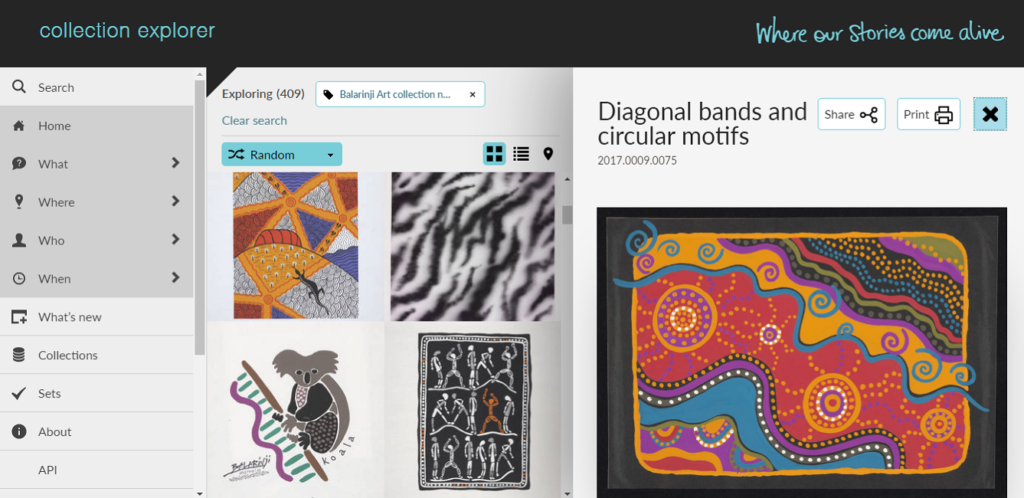
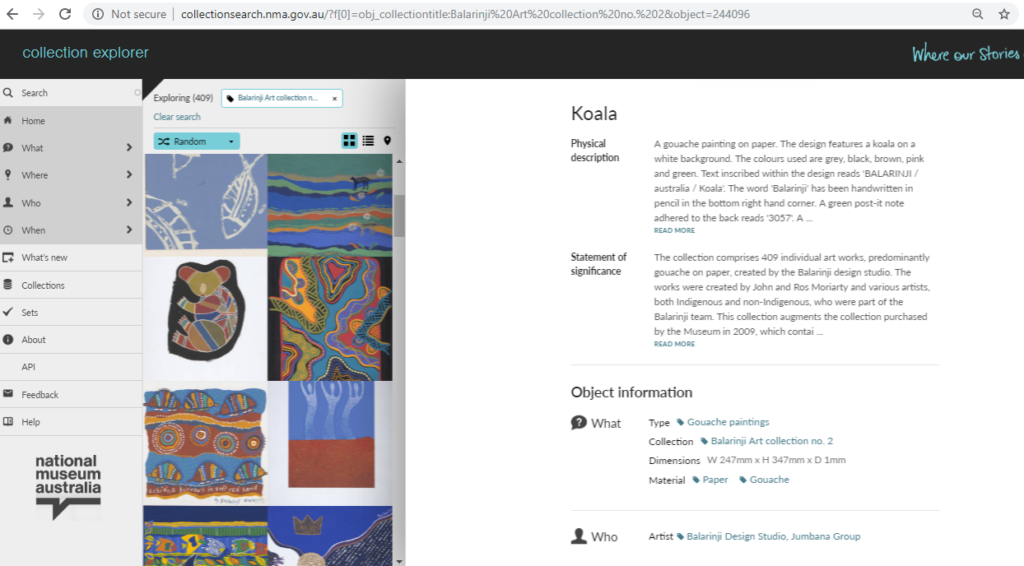
The dynamics of the publication of digital objects on the museum website shows a constant systematic increase in the number of represented objects even if in 2014-2015 the amount of objects plateaued due to testing of the new retrieval system and the general system of the representation of the collections.
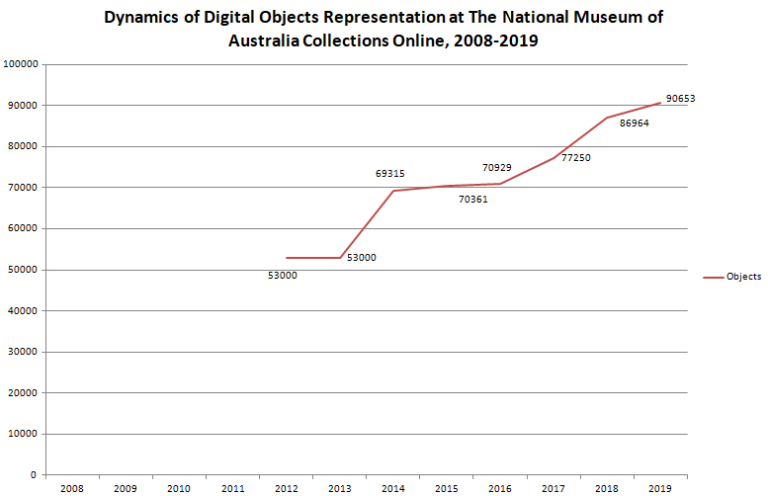
Engagement with Audiences Online. Education. Interaction
Initially, the creation of a virtual museum resource pursued educational goals. One of the first digital resources at the website was the catalog of the museum’s library for use in research and education. As mentioned earlier, in the second half of the 1990s the museum’s website did not contain significantly extended information about the museum’s collections, but could already be used by teachers. “Teachers Packages” which included pedagogical notes for teaching variety topics and considering different issues were posted on the website. Packages contained specific tasks for students of different levels. Indeed, these topics were corresponded to the exhibitions held in the museum, but could be used regardless of the visit to the museum and adapted as necessary.
Since the early 2000s, much attention has been paid to interactive technologies in the virtual space. At this time, interactive multimedia products began to be created on the topics represented in the museum collections. One such project was the “Coasting on the Web” project, which was originally released as a CD and then posted online for wider use. Digital interactive resources reflected different sides of the topic under discussion and at the level adapted for children. The topic was revealed on the basis of storytelling created using hypertext technology and illustrated with objects from the museum’s collections. The museum also created other interactive resources, including online games.
Of great importance in the educational programs of the museum were programs related to the understanding of museum activities and the museum beyond the scenes. In 2011, a specialized section “Understanding Museums” was created, designed to get virtual visitors of the resource familiar with museums as institutions for the preservation and representation of cultural heritage, organizations of significant public importance, to demonstrate their diversity from the perspectives of museology. Further, the program was continued in the direction of supporting research activities in the field of museology and curation.
The beginning of the 2010s was the period when a mainstream approach was to create content targeted at different audiences, including age groups. Educational programs were created taking into account the variability of the levels of school education and contained materials both for students to broaden their horizons, and for teachers to use at school. The basic principle for creating resources was not to duplicate school education but to supplement and enrich it. One of the National Museum of Australia’s greatest achievement has been its understanding of the value of real-life activities that might be inspired and nurtured through the digital environment. The museum creates virtual resources for family use at home, that is, outside the virtual environment and outside the walls of the museum, revealing important socially significant topics at a new level, supporting the joint activities of parents and children. The variability of the museum’s approaches to a virtual audience manifested itself in the creation of specialized resources aimed at adults. Such resources also contained various formats for use by adults, including audio and video content, as well as features of social media.

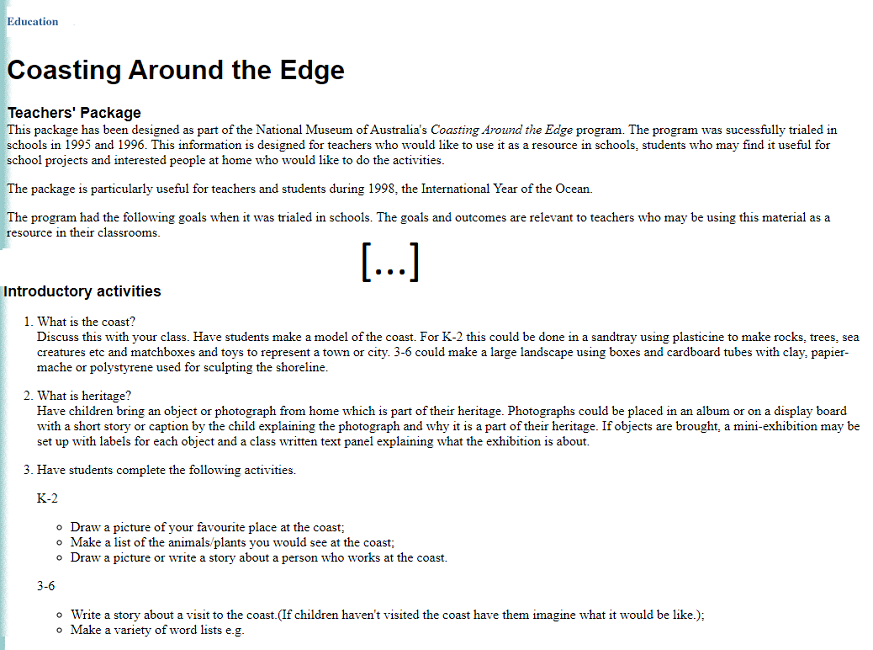
















Summary
The understanding of the mission and purposes of the virtual museum by the National Museum of Australia is significantly different from other museums. From the point of view of digital content and digital initiatives on the website, the main objective has been to expand educational opportunities of the museum, the ability to discuss the various topics, including socially significant and complex ones. Therefore, museum storytelling has long been the predominant form of digital content representation on the website. Over time, the approach to the development of the digital environment has become increasingly focused on specific audiences, the emphasis on the educational opportunities of collections has prevailed. In the web resource, the linkage between the created digital content such as objects, collections, educational resources, and storytelling was prioritised, which has allowed the museum to implement a variety of museum functions in the virtual space. Various ways have been embodied to maintain visitor interest based on diverse digital content.
